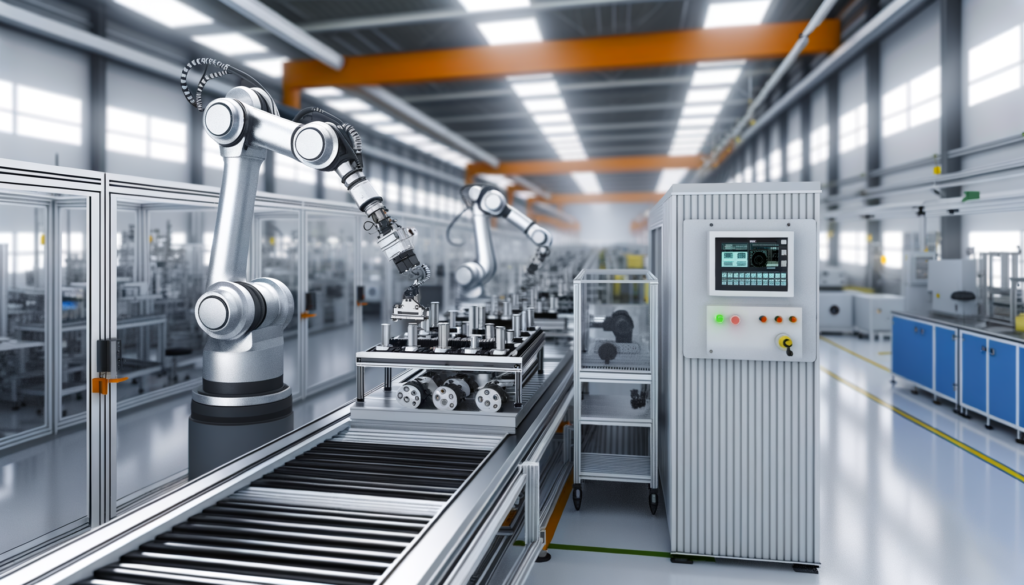Introduction to Claude 3.5
Anthropic has taken a significant leap forward in artificial intelligence technology with the launch of Claude 3.5. This advanced AI model is designed not just to assist users but to operate computers independently. Claude 3.5 represents a remarkable shift in how users can interact with machines, fundamentally altering the landscape of personal computing and productivity.
The evolution of AI has opened doors for innovation across various fields. Claude 3.5 builds upon its predecessors by enhancing the ability to understand and manipulate digital environments. This means that tasks which once required manual input can now be executed seamlessly by the AI. By automating even complex actions, Claude 3.5 brings enhanced efficiency and productivity to everyday computer use.
As individuals increasingly integrate AI into their daily routines, the implications of such technology become vital for both users and developers. The advanced capabilities of Claude 3.5 not only streamline processes but also pave the way for more intuitive human-computer interactions.
How Claude 3.5 Operates Independently
At the heart of Claude 3.5’s functionality is its ability to interpret commands and tasks given by users accurately. Unlike traditional AI, which primarily relies on prompts, Claude 3.5 can actively manage applications and system settings, mimicking human-like decision-making processes.
Key features of Claude 3.5 include:
- Contextual Understanding: The AI is equipped with advanced language processing capabilities that allow it to comprehend context in conversations, making it easier to engage in tasks that require a nuanced understanding of instructions.
- Autonomous Task Execution: Claude 3.5 can carry out commands without continuous user oversight, which enhances multitasking efficiency.
- Adaptive Learning: The AI learns from user interactions, adjusting its responses and actions based on past experiences and preferences.
- Seamless Integration: It can integrate with various software and systems, allowing for a more harmonious operation across different platforms.
This comprehensive suite of features enables Claude 3.5 to go beyond simple command-response interactions, positioning it as a true computing companion. By understanding user requirements and executing tasks, Claude 3.5 delivers a more streamlined experience, allowing users to focus on higher-level decision-making.
Practical Applications for Everyday Users
The potential applications of Claude 3.5 are vast and varied, catering both to professional environments and personal use. As users begin to explore its capabilities, they may find that many routine tasks can be automated, freeing time for more creative or strategic endeavors.
Common use cases include:
- Scheduling and Calendar Management: Claude 3.5 can automatically manage calendars, set appointments, and send reminders, ensuring that users never miss a meeting.
- Email Organization: The AI can filter and prioritize emails, draft replies, and even manage contact lists across multiple email accounts.
- Data Analysis: For analytical tasks, Claude 3.5 can process datasets, generate reports, and visualize data without requiring extensive input from the user.
- Software Management: It can install, update, and configure software packages, ensuring that systems run optimally.
This flexibility makes Claude 3.5 particularly appealing to professionals who juggle multiple tasks simultaneously. By offloading routine activities to AI, users can enhance their productivity and focus more on critical aspects of their work.
Enhancing Creativity with Claude 3.5
While many view AI as a tool primarily for efficiency, Claude 3.5 also fosters creativity. This AI model can assist in brainstorming sessions, design tasks, and project management, allowing users to harness its capabilities to extend their creative boundaries.
Specific ways Claude 3.5 enhances creativity include:
- Ideation Support: Users can initiate brainstorming workshops where Claude 3.5 generates ideas based on keywords or themes provided.
- Content Creation: It can assist in drafting articles, blog posts, and other content by suggesting topics, outlines, or even writing complete drafts based on defined criteria.
- Visual Design Assistance: The AI can help design graphics or layouts by interpreting user directives and offering creative suggestions or templates.
By incorporating Claude 3.5 into creative processes, individuals can speed up the innovation cycle and explore a myriad of ideas without the time-consuming tasks that often accompany creative work. Consequently, users can push the boundaries of what’s possible, blending human intuition with AI efficiency.
Addressing Security and Privacy Concerns
As with any advanced technology, the implementation of Claude 3.5 raises important questions about security and privacy. Given that the AI handles sensitive information and personal data, it is crucial to understand the measures in place to protect user data.
Security features include:
- Data Encryption: Claude 3.5 uses advanced encryption methods to ensure that user data is secure and inaccessible to unauthorized users.
- User Consent Protocols: Before processing any data, the AI follows strict user consent protocols to ensure that individuals have control over what information is used.
- Regular Audits: Routine audits are conducted to identify potential vulnerabilities and ensure compliance with data protection regulations.
It is essential for users to understand their responsibilities in safeguarding their data as well. By being vigilant about access permissions and familiarizing themselves with the security settings of Claude 3.5, individuals can further enhance their protection against potential threats.
The Future of AI with Claude 3.5
The emergence of Claude 3.5 signals a new era of AI capabilities that will likely become more prevalent in both consumer and enterprise markets. As this technology continues to evolve, it sets the stage for AI systems that can seamlessly operate alongside humans, adapting to changing demands and environments.
Potential developments we may see include:
- Greater Personalization: Future iterations of Claude may offer even more personalized experiences based on user behaviors and preferences.
- Collaboration Enhancements: Claude 3.5 can evolve to become more collaborative, allowing multiple AI instances to work together on projects.
- Improved Emotional Intelligence: Advancements may lead to AI with enhanced capabilities to understand and respond to human emotions, resulting in more empathetic interactions.
These advancements can lead to a society where AI plays an integral role in daily life and work, fostering collaboration and innovation across various sectors. Claude 3.5, with its independence in operating computers, stands at the forefront of this transformation.
Conclusion
The advancements represented by Claude 3.5 are not merely technical achievements; they carry significant implications for how society approaches productivity, creativity, and technology adoption. By allowing AI to operate independently, Anthropic has created a powerful tool that complements human efforts and enhances tasks ranging from simple to complex.
As users adapt to this new paradigm, the future of AI will undoubtedly be shaped by how effectively we harness its potential. The possibilities for Claude 3.5 stretch far beyond what we may currently envision, marking a pivotal moment in the evolution of artificial intelligence. Its capacity to operate independently paves the way for a more productive and creatively invigorating future, where human ingenuity can flourish alongside advanced AI systems.



